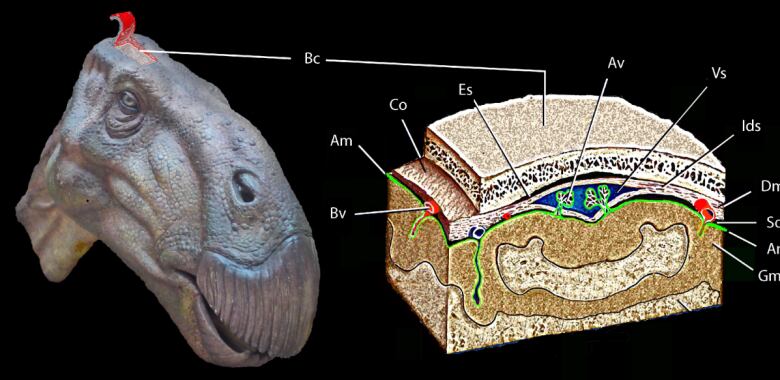Scientists identify 1st fossilized dinosaur brain tissue
Soft tissue probably 'pickled' in swamp or bog water, researchers say

When fossil hunter Jamie Hiscockscame upon a small brown pebble more than a decade ago in Sussex, England, he knew there was something weird about it.
Turns out he was right his 2004 find marked the first ever discovery offossilized dinosaur brain tissue.
"I have always believed I had something special. I noticed there was something odd about the preservation, and soft tissue preservation did go through my mind," Hiscocks said in a press releasefrom the University of Cambridge in Britain.
- Dinosaurs of a feather flocked together, U of A study finds
- Dinosaurs likely didn't roar, new research suggests
Martin Brasier, aUniversity of Oxford paleobiologistwho helped study the strange fossil, agreed. He died in 2014 and a study of the brain fossil was published in tribute to him Thursday in the Special Publication of the Geological Society of London.
"Martin realized its potential significance right at the beginning, but it wasn't until years later that its true significance came to be realized," Hiscocks said.
"In his initialemailto me, Martin asked if I'd ever heard of dinosaur brain cells being preserved in the fossil record. I knew exactly what he was getting at. I was amazed to hear this coming from a world renowned expert like him."
Conditions 'just right' for preservation
In conjunction with the University of Western Australia researchers, researchers used scanning electron microscope techniques to identifytough membranes, strands of collagen and blood vessels in the fossil. The brain structure is similar to that of modern-day birds and crocodiles, which makes sense because thoseare the descendents of dinosaurs.
"What's truly remarkable is that conditions were just right in order to allow preservation of the brain tissue," said David Norman, a paleobiologist from the University of Cambridge who co-authored the study with Hiscocks.
Scientists believe the brain bit belongs to a speciessimilar to the Iguanodon a large herbivore dinosaur that walked the Earth some 133 million years ago.

They figure its brain tissue was "pickled" in swamp or bog water after it died.
"What we think happened is that this particular dinosaur died in or near a body of water, and its head ended up partially buried in the sediment at the bottom," Norman said.
"Since the water had little oxygen and was very acidic, the soft tissues of the brain were likely preserved and cast before the rest of its body was buried in the sediment."
Norman said hehopes "this is the first of many such discoveries."













_(720p).jpg)


 OFFICIAL HD MUSIC VIDEO.jpg)
.jpg)



























































































